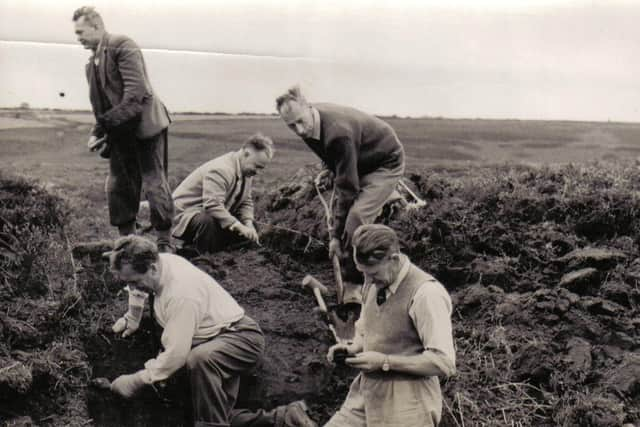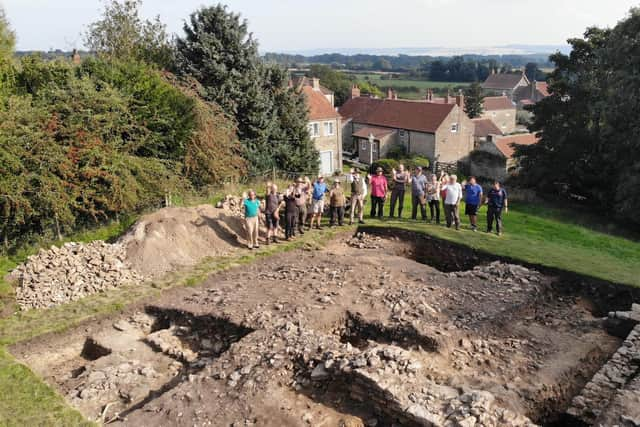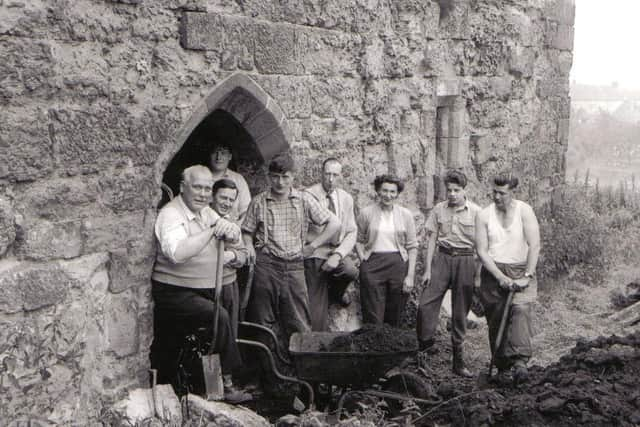Scarborough Archaeological Society: 75 years of unearthing the past
Embedded within the filled-in deposits of what had been the town’s 13th century defensive ditch, what seemingly appeared to be a single piece of animal bone would later eventually reveal itself to be part of a complete skeleton of a medieval horse. Given evidence of a gash in the animal’s skull, it was surmised that it may have become inexorably injured or trapped in the ditch and was mercifully put out of its misery.
This is one particularly memorable example of Scarborough Archaeological and Historical Society’s (SAHS) regularly undertaken excavation projects. In recent decades, these have often been in close collaboration with leading professional teams from English Heritage, York Archaeological Trust (YAT), York University and Birmingham University Field Archaeology Unit, amongst others.
Advertisement
Hide AdAdvertisement
Hide AdExperienced York-based archaeologist Dr Patrick Ottaway directed a SAHS team of volunteers on the YAT excavation of the Roman Signal Station on Filey Brigg back in 2000. He says: “Community-based archaeological research is fundamental to our understanding of many aspects of our past. The Scarborough Society is an outstanding example of how best to do this, combining the enthusiasm and knowledge of local people with serious academic enquiry to create an archaeology of their town which would otherwise be largely unknown and unappreciated.”


A local voluntary organisation, SAHS has an annual public lecture programme and is actively involved within the archaeology profession, with a long–established commitment to historical research and academic publishing. Numerous leading members of the society are or have been professional archaeologists, historians or academics, all of which have brought substantial experience and expertise.
A registered charity, the society’s key objective is to advance education of the town and surrounding region’s archaeology and local history, for the benefit of the public. Research into sites and archives of archaeological, architectural and historical interest, the publishing of the subsequent results and the identification and preservation of such sites and archives are important components of the group’s work.
Former professional archaeologist SAHS President Trevor Pearson says: “Archaeology can create histories of periods where there are few written records such as after the departure of the Romans (the so-called Dark Ages) and also tells us about the lives of ordinary people who maybe haven't left any written trace behind them.”
Advertisement
Hide AdAdvertisement
Hide AdInaugurated in the immediate aftermath of the Second World War, the society became established in June 1947. Amongst the founding members was John Moore, whose initial uncovering of ten prehistoric hunting camps in the Vale of Pickering in 1948, was the forerunner to the internationally significant Star Carr excavations led by Professor Grahame Clark of Cambridge University between 1949-51.


Further extensive investigations of the rich site were carried out more recently by Professor Nicky Milner of York University commencing in 2004 with assistance from society members. Star Carr, a Mesolithic (Middle Stone Age) archaeological site, dating to around 9000 BC, has become famous in the archaeological world due to the preservation of artefacts found buried deep in the peat. It has revealed headdresses made from red deer skulls, thought to be used by shamans in ritual practices, and the earliest known example of carpentry in Europe.
“The Scarborough Archaeological and Historical Society have done a phenomenal amount of work over the last 75 years”. Professor Milner states. “They have not only discovered and uncovered some spectacular archaeology, including the important site of Star Carr, but have also worked hard to make sure their findings are known about in the local area. It has been a great honour and privilege for me to know and work with members.”
In the late 1950s the group would again enact a pioneering role within archaeological practice, in excavating the deserted medieval village of Hatterboard. Since the late 1960s, the group has also focused on investigating the urban sites of the former medieval town area of Scarborough itself. Its campaign of urban excavations gained national recognition in 1990 when the group won the prestigious Pitt Rivers Award.
Advertisement
Hide AdAdvertisement
Hide AdSince the early years, publishing has formed an integral component of the society’s activities, from detailed academic post-excavation reports to more accessible pamphlets. The society’s journal, Transactions, first produced in 1958, also carries reports on members’ historical researches.


The rapid advancement of technology has heralded a shift in the methods used in surveying archaeological sites. In more recent years, the society has utilised the latest geophysics equipment. Pearson says: “Technology has made archaeology into a science with techniques such as radiocarbon dating and DNA analysis. It has also helped with excavations as with the availability of satellite technology and drones to map sites both accurately and quickly.”
The society has an ongoing lecture programme, which over the years has included many eminent figures such as professionals who featured in Channel 4’s archaeological dig show Time Team. “The programme made archaeology accessible to the general public and helped people to understand the processes involved in finding out about a site,” Pearson says. “It also encouraged the founding of many new archaeological societies by people wanting to collaborate with others in investigating their local area.”
Details SAHS events and activities together with a range of publications are available from sahs.org.uk